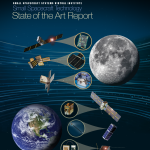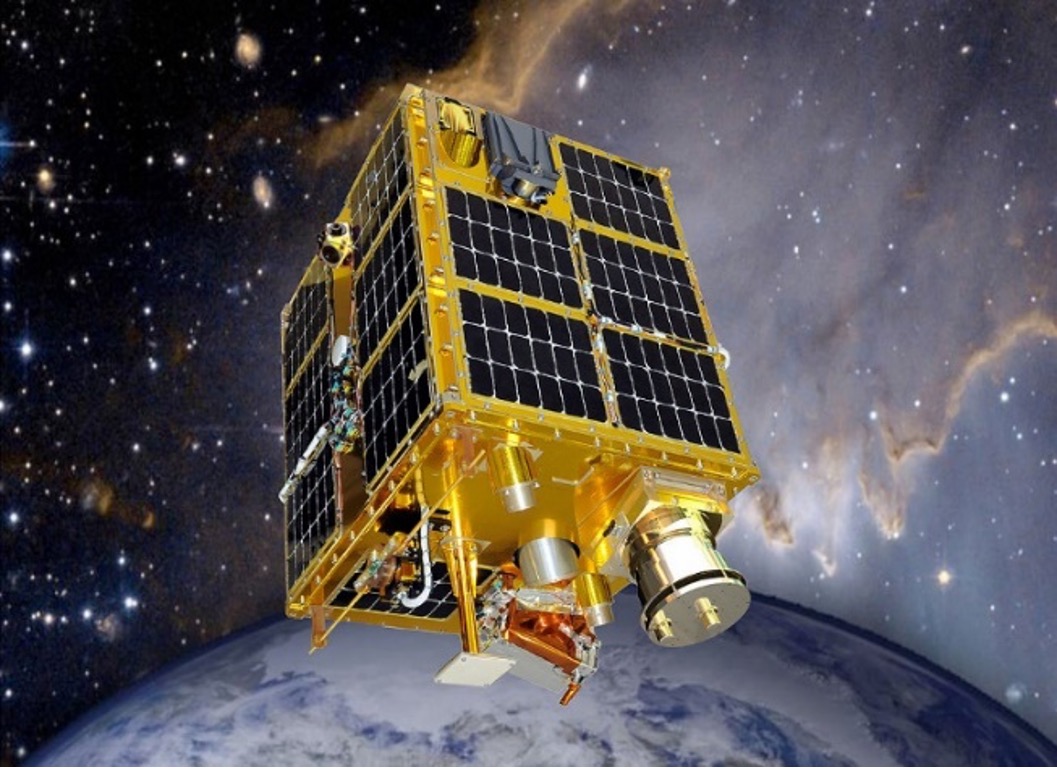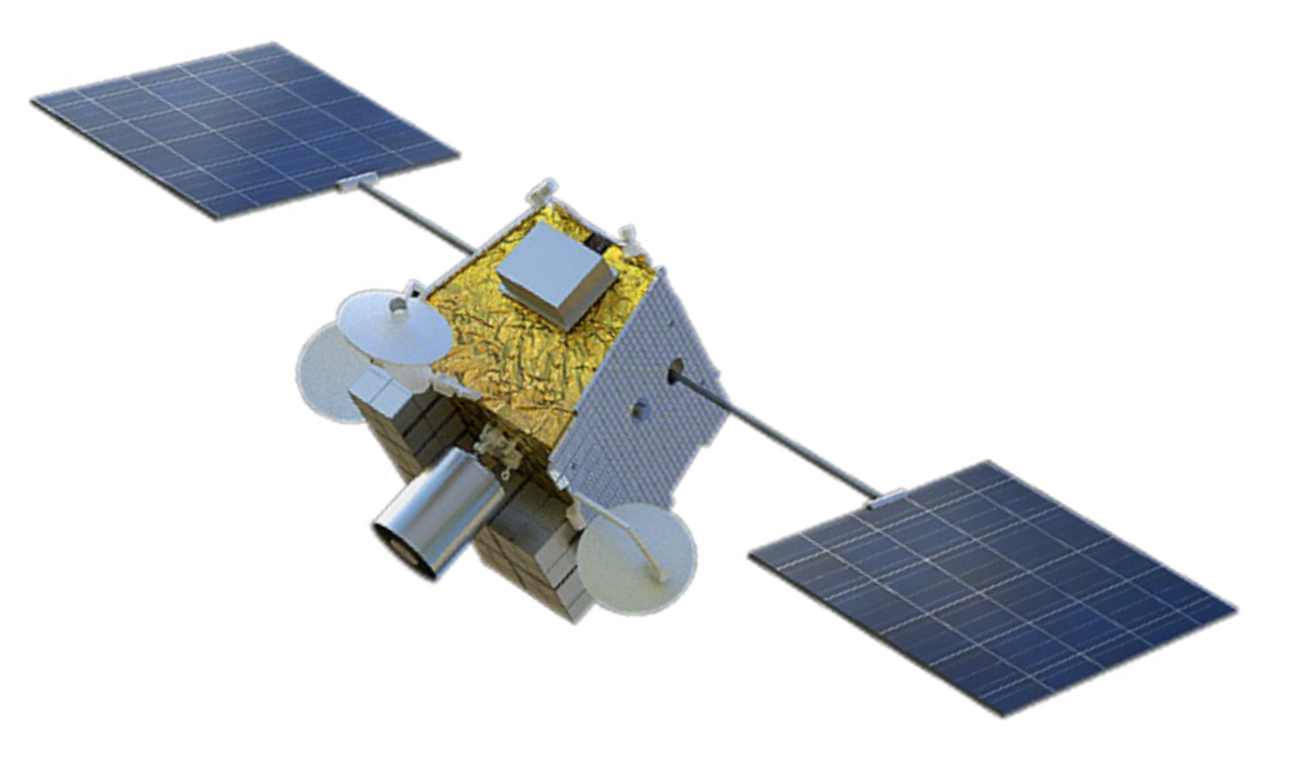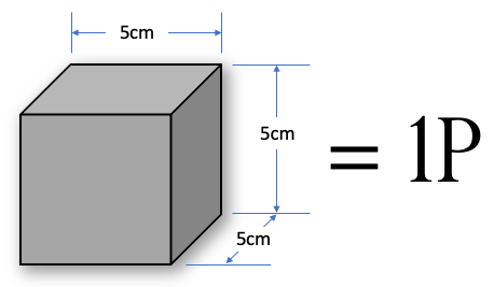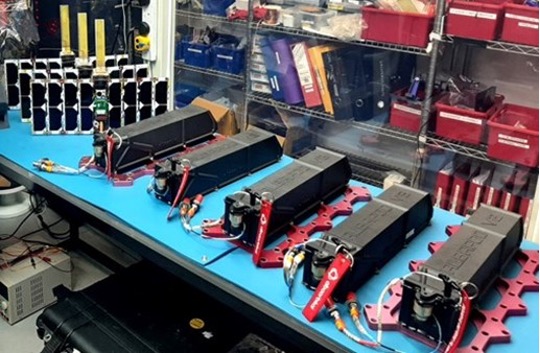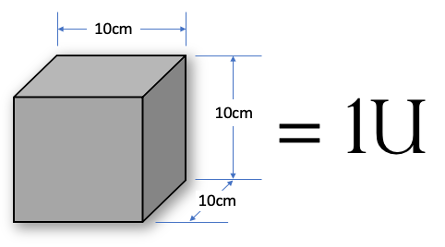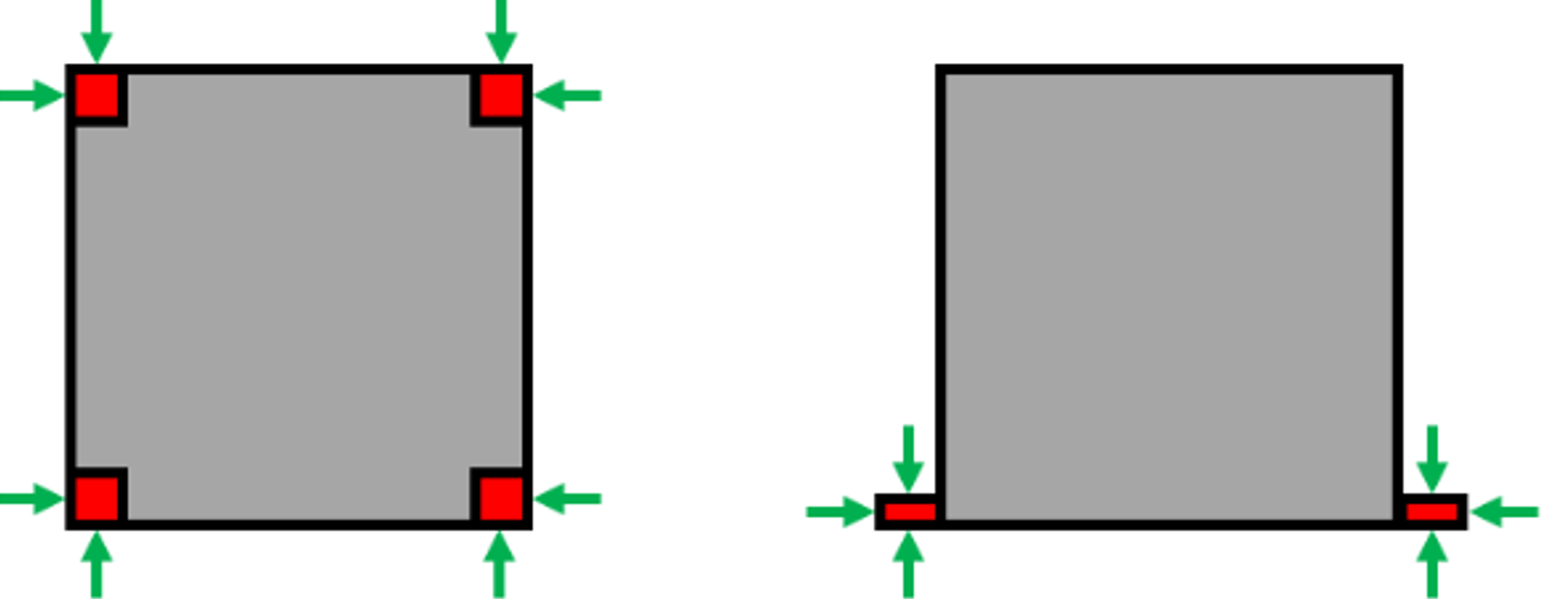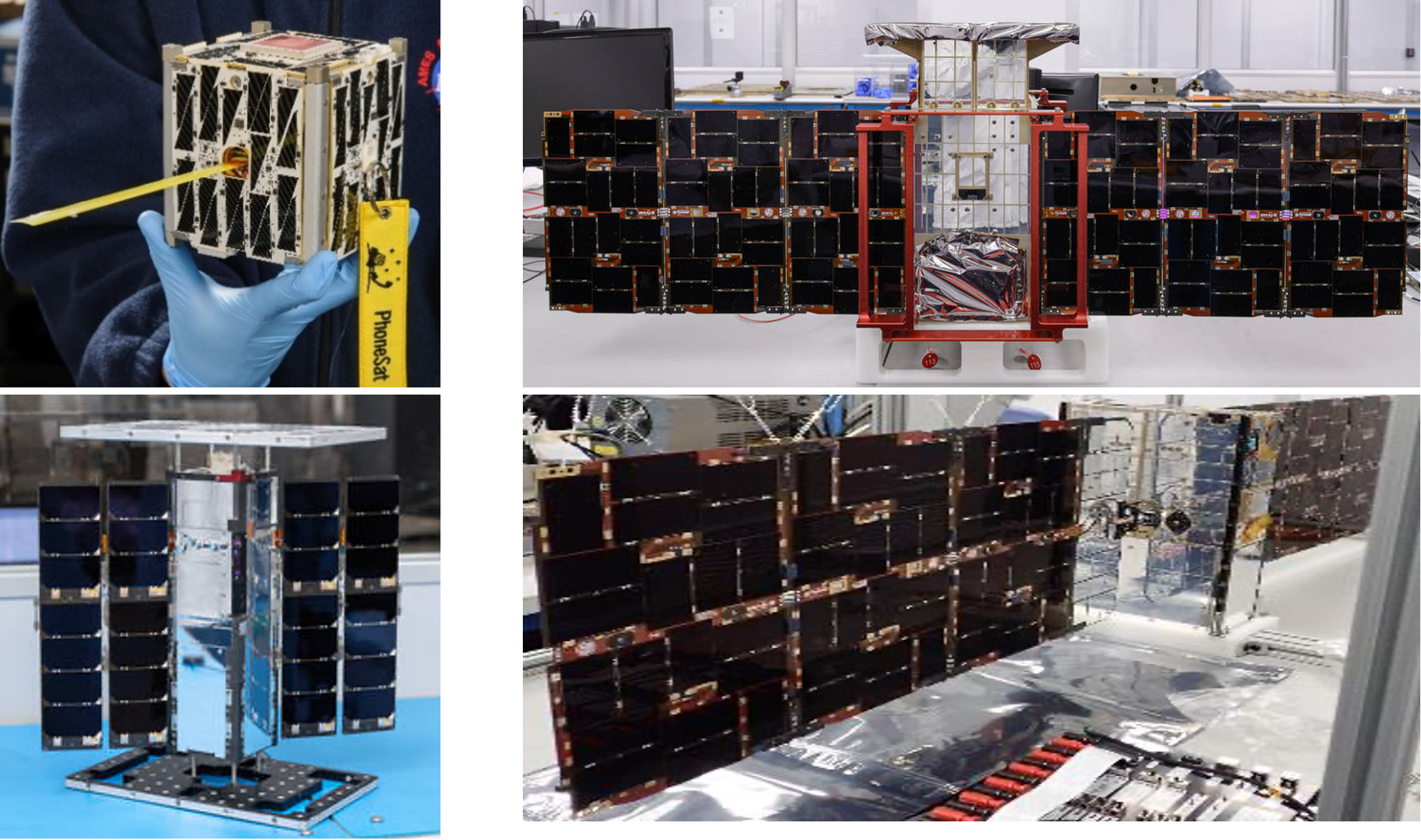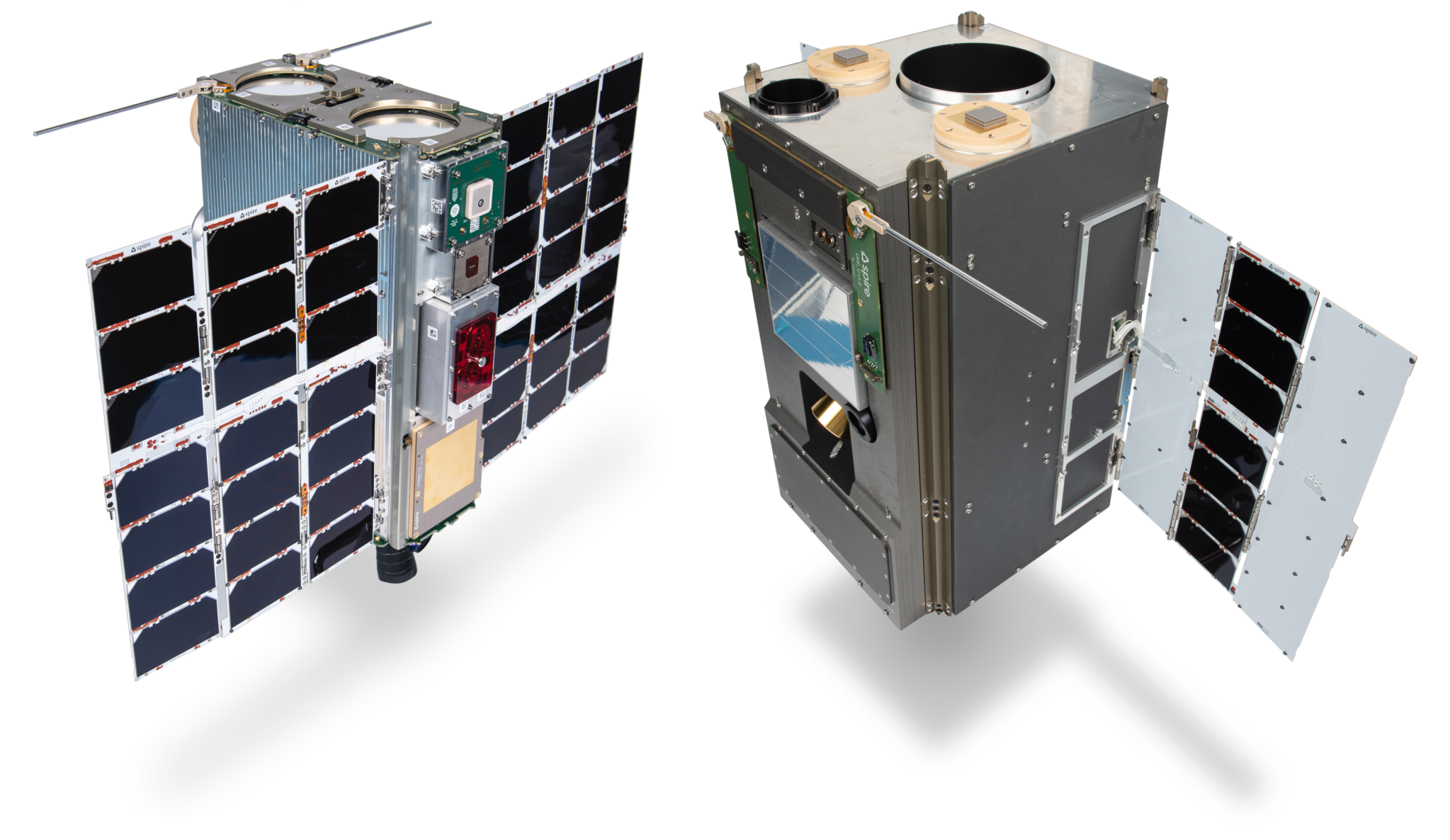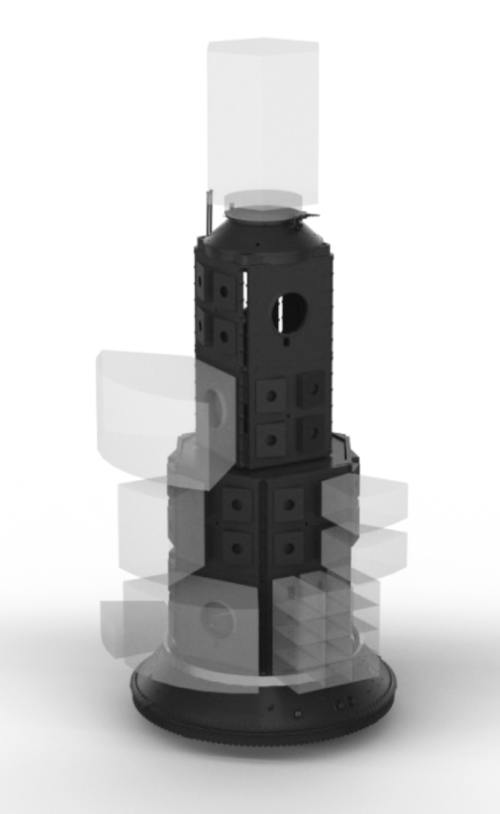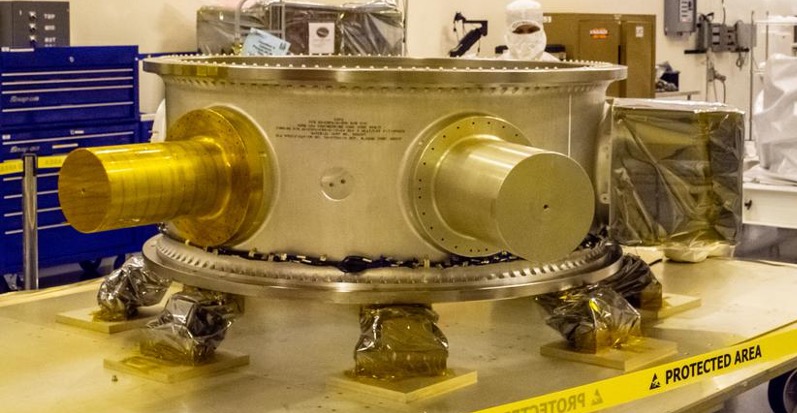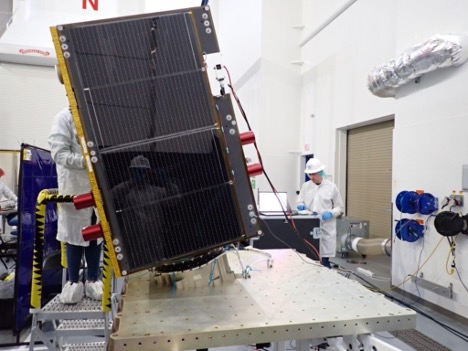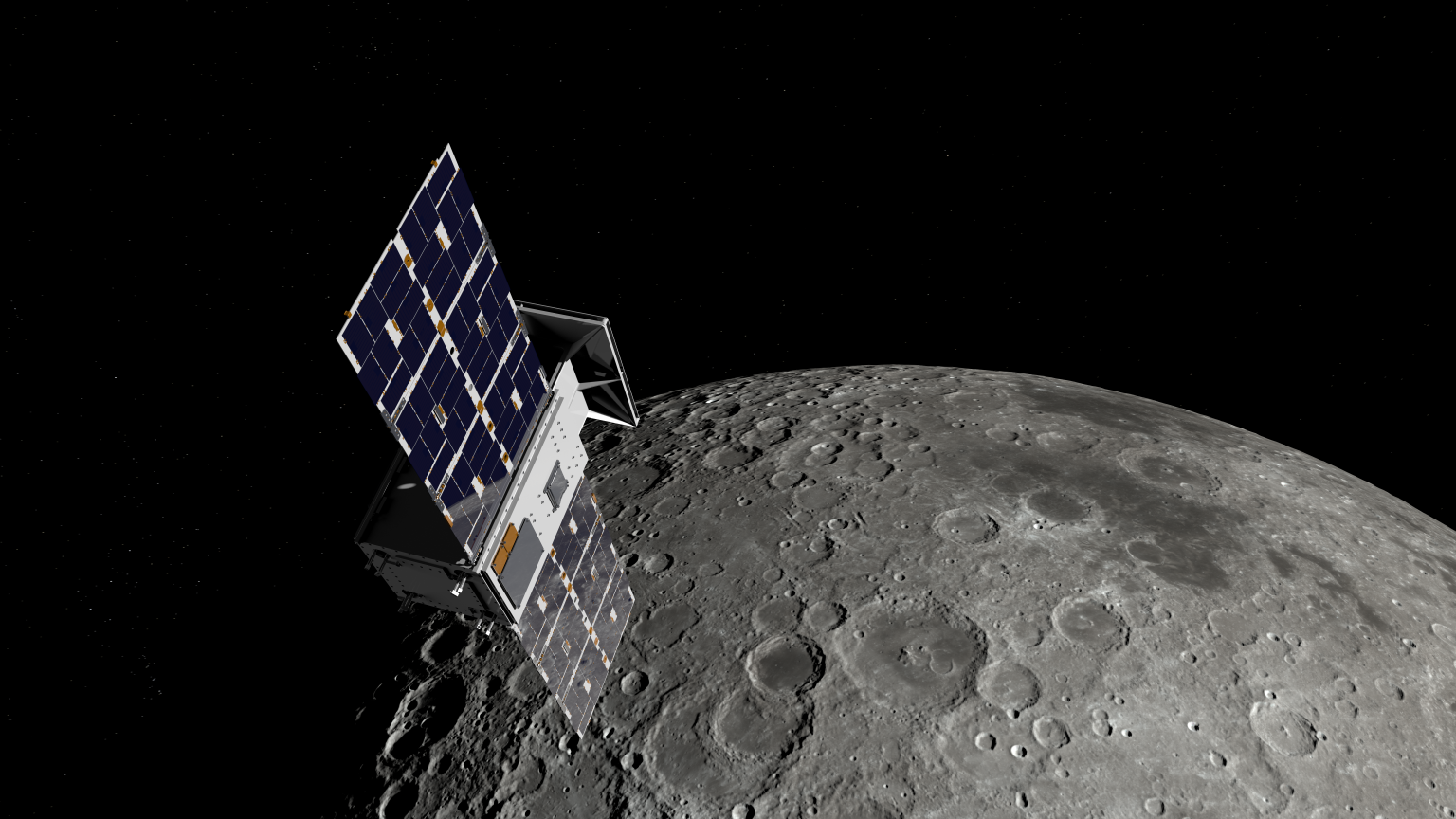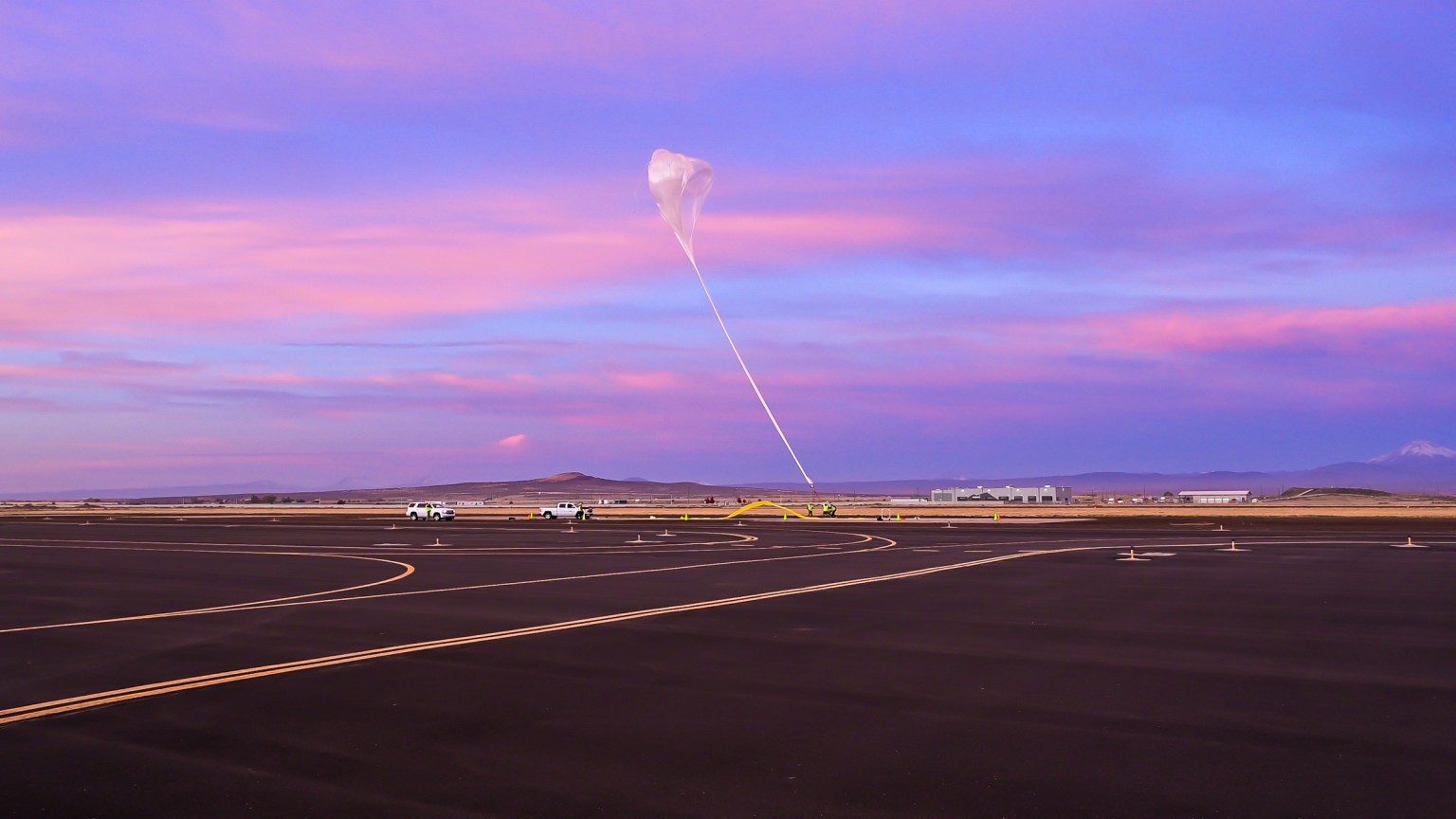Chapter Contents
- Chapter Glossary
- 2.1 Introduction
- 2.2 State-of-the-Art – Spacecraft Platforms
- 2.3 Programmatic and Systems Engineering Considerations
- 2.4 On the Horizon
- 2.5 Summary
- References
Chapter Glossary
| (COTS) | Commercial-off-the-Shelf |
| (EELV) | Evolved Expendable Launch Vehicle |
| (ESPA) | EELV Secondary Payload Adapter |
| (GEO) | Geostationary Equatorial Orbit |
| (I&T) | Integration and Test |
| (kg) | Kilogram |
| (LEO) | Low Earth Orbit |
| (MEO) | Medium Earth Orbit |
| (MTBF) | Mean Time Between Failures |
| (NASA) | National Aeronautics and Space Administration |
| (SHF) | Super High Frequency |
| (SmallSat) | Small Satellite |
| (SPA) | Secondary Payload Adapter |
| (STMD) | Space Technology Mission Directorate |
| (UHF) | Ultra High Frequency |
| (UK) | United Kingdom |
| (Unk) | Unknown |
| (USA) | United States of America |
| (VLEO) | Very Low Earth Orbit |
| (VHF) | Very High Frequency |
| (W) | Watts |
| (xGEO) | Beyond Geostationary Equatorial Orbit |
2.1 Introduction
The SmallSat market provides a variety of mission-enabling components. Along with a large variety of new and proven components, companies are now offering entire spacecraft bus solutions. Spacecraft bus refers to the side of the mission flight segment that provides essential services to the payload. This chapter addresses the state of the art in the small spacecraft bus offerings and provides the reader with a programmatic overview for small spacecraft mission development.
There are 2 distinct types of SmallSat market options in terms of complete spacecraft platforms. One option is not superior to the other and selection may depend on the needs of each individual mission.
Hosted payloads – Also known as “satellite-as-a-service,” integrates multiple payloads from different and independent customers into the same platform with some form of resource sharing (cost, autonomy, concept of operations, etc.). Hosted payload configurations and performance vary by provider. Two examples of hosted payloads are:
Service provider brokers multiple independent customer payloads into a single spacecraft bus (no primary payload)
Service provider intends to launch their own satellite with its own primary goals but have unused resources and allows secondary payloads to be added
Dedicated spacecraft bus – the entirety of the spacecraft bus is at the disposal of a single customer or mission
This chapter organizes the state-of-the-art small spacecraft platforms into these two main categories. The dedicated small spacecraft bus section is further divided by PocketQube, CubeSat, and ESPA-Class offerings. Each subsection contains a summary table with a non-exhaustive list of commercially available small spacecraft platforms.
- Hosted Payloads (2.2.1)
- Dedicated Spacecraft Bus (2.2.2)
- PocketQubes (2.2.2.1)
- CubeSats (2.2.2.2)
- ESPA-Class (2.2.2.3)
Following Section 2.2 is a brief explanation on systems engineering considerations that introduces newcomers to the design selection process and highlights specific resources for mission development. On the Horizon is a section that describes upcoming technology considered low maturity and revolutionary in small spacecraft platform with the potential to advance the state-of-the-art.
The list of organizations/companies in this chapter is not all-encompassing and does not constitute an endorsement from NASA. The information is for awareness and guidance only. The performance advertised may differ from actual performance since the information has not been independently verified by the State-of-the-Art document staff and relies on information provided directly from the manufacturers or available public information.
Section 2.6 includes a list of providers with contact information and the source used to complete the tables. It is recommended to contact the organizations/companies directly for further clarification and application to your specific needs.
2.2 State-of-the-Art – Spacecraft Platforms
2.2.1 Hosted Payloads
Hosted payloads, also referred as “satellite-as-a-service,” “hitchhiking” or “piggybacking,” is increasing in popularity due to its cost savings. The idea is to share the spacecraft bus platform with other payloads and still achieve mission success. The terms of the agreement are negotiated in advance with the provider to ensure necessary on-orbit time, power, pointing and data volume (among other resources) are adequate for the mission.
Configurations of a hosted payload platform are typically scalable, and several spacecraft platform vendors provide hosted payload services. Larger spacecraft bus hosted options offer deployable capability/mechanisms for smaller nanosatellite missions. NASA’s Fast, Affordable, Science and Technology Satellite (FASTSAT) is an example of a minisatellite that hosted smaller science and technology flight missions. It carried several low-TRL experiments and deployed NanoSail-D. See figure 2.1 for an illustration of FASTSAT. Figure 2.2 is from Loft Orbital Hosted Payload Services.
Hosted payload services are becoming more appealing for academic and government scientific missions. This option provides a cost-effective and timely solution to those missions going to the same destination.
| Table 2-1: Hosted Payload Providers (The fields indicate maximum capability, organizations may offer multiple options including smaller capabilities within the Hosted Payloads category) | |||||||
| Organization | Max Volume | Max Mass (kg) | Peak Power (W) | 3-σ Pointing Control/ Knowledge | Destination | US Office | |
| Artemis Space Technologies UK | 0.58 m3 | 500 | 1,500 | 0.01°/0.01° | LEO, MEO, GEO, Lunar and Deep Space | No | |
| Astranis Space Technologies Corp. USA | 0.02 m3 | 10 | 300 | <0.1°/ <0.09° | GEO | Yes | |
| Axelspace Japan | 0.2 m3 | 30 | 184 | <0.05°/ <0.04° | LEO | No | |
| Berlin Space Technologies Germany | 1 m3 | 200 | 3,000 | <0.017°/< 0.017° | LEO | Yes | |
| Bradford Space USA | 0.38 m3 | 220 | 1,500 | 1.5°/ 0.006° | LEO, GEO, GTO, Cislunar, Lunar, Deep Space | Yes | |
| C3S Electronics Development Hungary | 16.5U | 18.5 | 155 | 0.2°/ 0.2° | LEO, MEO | No | |
| EnduroSat Bulgaria | 10U | 20 | 60 | 0.1°/ 0.05° | LEO | Yes | |
| General Atomics EMS USA | 0.46 m3 | 200 | 450 | 0.03°/ 0.02° | LEO | Yes | |
| German Orbital Systems Germany | 4U | 8 | 50 | <1°/< 1° | LEO | No | |
| Gran Systems Taiwan | 6U | 9 | 25 | 5°/ 5° | LEO, Lunar | No | |
| Hemeria France | 0.1 m3 | 35 | 250 | 0.03°/0.01° | LEO, GTO, GEO | No | |
| Innova Space Argentina | 0.5U | 0.5 | 4 | <15°/< 15° | LEO | Yes | |
| In-Space Missions UK | Unk | Unk | Unk | Unk | LEO | Unk | |
| Loft Orbital USA | 0.44 m3 | 85 | >1,000 | <0.035°/<0.03° | LEO | Yes | |
| Momentus USA | 1 m3 | 350 | 3,000 | 0.05°/ 0.05° | LEO | Yes | |
| Muon Space USA | 60U | 30 | 200 | 0.03°/ 0.012° | LEO | Yes | |
| NanoAvionics Lithuania | 0.7 m3 | 150 | 378 | 0.15°/ 0.03° | LEO | Yes | |
| NearSpace Launch USA | 8U | 16 | 160 | 0.5°/ 0.2° | LEO | Yes | |
| Northrop Grumman USA | 0.37 m3 | 50 | 420 | <4°/<1° | LEO | Yes | |
| NovaWurks USA | 1 m3 | 150 | 1000 | 0.002°/0.0004° | LEO, GEO, xGEO | Yes | |
| NPC SPACEMIND Italy | 12U | 24 | 100 | <0.1°/<0.1° | LEO, MEO | No | |
| OHB LuxSpace Luxembourg | 0.3 m3 | 90 | 600 | <0.022°/ 0.01° | LEO | No | |
| Open Cosmos UK | 12U | 18 | 160 | 0.03°/0.02° | LEO | No | |
| Orbital Astronautics UK | 0.163 m3 | 100 | 5,000 | <0.05°/<0.01° | LEO, MEO, GEO, Deep Space | No | |
| Orion Space Solutions USA | 14U | 45 | 400 | <1°/<1° | LEO, GEO, Lunar | Yes | |
| Quantum Space USA | 0.5 m3 | 100 | 400 | 0.006°/0.006° | LEO, GEO, Cislunar, Lunar, Deep Space | Yes | |
| Redwire USA | 0.94 m3 | 104 | 500 | 0.005°/0.0017° | LEO, MEO, GEO and Deep Space | Yes | |
| SatRev Poland | 3U | 3 | 25 | 1°/0.6° | LEO | No | |
| Sierra Space USA | 0.48 m3 | 250 | 500 | 0.001°/ <0.001° | LEO, MEO, GEO | Yes | |
| SITAEL Italy | 0.54 m3 | 100 | 1,000 | 0.018°/ 0.010° | LEO | No | |
| Space Inventor Denmark | 24U | 50 | 400 | <0.008°/ <0.008° | LEO, GEO, MEO | No | |
| Spacemanic Czech Republic | 12U | 18 | 500 | 0.1°/ 0.05° | LEO, MEO, GEO, Lunar | No | |
| Spire Global USA | 12U | 32 | 300 | 0.1°/ 0.05° | LEO | Yes | |
| Xplore USA | 0.125 m3 | 55 | 210 | 0.17°/ 0.018° | VLEO, LEO, Cislunar | Yes | |
| York Space Systems USA | – | 300 | 1,500 | 0.008°/ 0.004° | LEO, GEO, Lunar | Yes | |
2.2.2 Dedicated Spacecraft Bus
The market has grown considerably over the last 5 years with complete spacecraft bus solutions including I&T and operations options. The addition of I&T and operations gives missions flexibility in implementation, allowing the mission to focus on unique or challenging aspects of the project as needed. Mission implementation solutions are shown in table 2-2. A complete vendor solution can allow the mission organization to focus primarily on payload development, however this may not be appropriate for all missions. For example, an organization may decide to perform their own mission operations if the vendor offerings do not meet the requirements for the project.
| Table 2-2: Mission Implementation Flexibility | ||||
| Option | Product or Service | |||
| Spacecraft Bus | System-Level Integration and Testing | Operations | ||
| 1 | Vendor | Vendor | Vendor | |
| 2 | Vendor | Vendor | Mission Organization | |
| 3 | Vendor | Mission Organization | Mission Organization | |
| 4 | Mission Organization | Mission Organization | Mission Organization | |
2.2.2.1 PocketQubes
PocketQubes refer to small satellites that conform to a form factor of 5 cm cubes. PocketQubes use a standard deployer and follow a unit nomenclature of P. In this case 1P refers to a single 5 cm cube (see figure 2.3). Consequently, 2P refers to 2 of these single units. A typical PocketQube deployer can deploy up to a 3P satellite but larger deployers may allow additional capability. PocketQube providers have developed spacecraft busses to simplify mission implementation; a list of providers is included in this section; table 2-3 provides available commercial PocketQube products. Figure 2.4 is an example of a PocketQube deployer at Alba Orbital.
| Table 2-3: PocketQubes Market Solutions (The fields indicate maximum capability, organizations may offer multiple options including smaller capabilities within the PocketQube category) | ||||||
| Organization | Peak Power (W) | 3-σ Pointing Control/ Knowledge | Comm Options | Intended Destination | Maturity | US Office |
| Alba Orbital UK | 15 | 5°/2° | UHF, S | LEO | Flown LEO | Yes |
| Citadel Space Systems UK | 20 | Unk | UHF, S | Unk | Unk | Unk |
| DIYSATELLITE Argentina | 9 | <5°/<5° | VHF, UHF, SHF | LEO, GEO, Lunar | Flown LEO | No |
| FOSSA Systems Spain | 10 | <5°/<5° | UHF, S | LEO | Flown LEO | No |
| Innova Space Argentina | 3.9 | N/A -Magnetic Passive | UHF | LEO | Flown LEO | Yes |
| Quub, Inc. USA | 26 | 5°/2° | UHF, S | LEO, Lunar | Flown LEO | Yes |
2.2.2.1 CubeSats
CubeSats refer to small satellites that conform to a form factor of 10 cm cubes. The CubeSat standard was created by California Polytechnic State University, San Luis Obispo, and Stanford University’s Space Systems Development Lab in 1999 to facilitate access to space for university students. When launch providers started adopting this standard as a secondary payload service it enabled increased, low-cost opportunities for space access. Many organizations are currently using the standard including academia, private industry, and government. For more information on the history of CubeSats, the reader is encouraged to review the Introduction of this report.
CubeSat sizes follow a unit nomenclature in which 1 unit or 1U refers to a single 10 cm cube (see figure 2.5). Consequently, 2U refers to 2 of these single units, 3U is a set of 3 single units, and so forth. CubeSat providers have developed spacecraft busses to accommodate missions from 1U to 27U satellites. This section provides a list of providers separated by satellite size: 0.25U-3U, 6U, 12U and 16U+ in tables 2-4, 2-5, 2-6, and 2-7.
CubeSat sizes follow a unit nomenclature in which 1 unit or 1U refers to a single 10 cm cube (see figure 2.5). Consequently, 2U refers to 2 of these single units, 3U is a set of 3 single units, and so forth. CubeSat providers have developed spacecraft busses to accommodate missions from 1U to 27U satellites. This section provides a list of providers separated by satellite size: 0.25U-3U, 6U, 12U and 16U+ in tables 2-4, 2-5, 2-6, and 2-7.
Multiple companies have developed deployers for CubeSats with different dimensions and external volume allocations. Contact your sponsoring organization and/or launch provider for specifics on which deployer is used in your mission. Many CubeSat deployers exist in the market but the primary 2 interfaces follow the classic corner rails or the tabs (clamped and unclamped), as seen in figure 2.6. Most spacecraft bus providers in this chapter can adapt to different interfaces. Please refer to the Launch, Integration, and Deployment chapter for further information on SmallSat deployers. Figure 2.7 includes images of CubeSat missions that have been successfully flown in space, figure 2.8 provides examples of CubeSat deployers’ location on a rocket, and figure 2.9 provides examples for 6U and 16U satellites from Spire Global.
| Table 2-4: 0.25U-3U Market Solutions (The fields indicate maximum capability, organizations may offer multiple options including smaller capabilities within the 0.25U‑3U category) | ||||||
| Organization | Peak Power (W) | 3-σ Pointing Control/ Knowledge | Comm Options | Intended Destination | Maturity | US Office |
| AAC Clyde Space Sweden | 90 | <0.1°/<0.01° | VHF, UHF, S, X | LEO | Flown LEO | Yes |
| Alén Space Spain | 180 | 0.2°/0.1° | VHF, UHF, S | LEO | Flown LEO | No |
| Artemis Space Technologies UK | 50 | 0.01°/0.01° | UHF, S, X, Ka, Ku | Designed for LEO | Flown LEO | No |
| Blue Canyon Technologies USA | 27 | 0.003°/0.003° | L, S, X | LEO, GEO, Deep Space | Flown LEO Qualified GEO and Deep Space | Yes |
| C3S Electronics Hungary | 35 | 0.2°/0.2° | UHF, S | LEO, MEO | Flown LEO | No |
| EnduroSat Bulgaria | 30 | <1°/<0.6° | UHF, S, X | LEO | Flown LEO | Yes |
| General Atomics EMS USA | 10 | 0.28°/0.08° | UHF | LEO, MEO, GEO, xGEO | Under Development | Yes |
| German Orbital Systems Germany | 24 | <1°/<1° | UHF, S | LEO | Flown LEO | No |
| GomSpace Denmark | 35 | 2.5°/2° | S | LEO | Flown LEO | Yes |
| Gran Systems Taiwan | 25 | 5°/ 5° | VHF, UHF | LEO | Flown LEO | No |
| GUMUSH AeroSpace Turkey | 80 | <1°/ <0.005° | VHF, UHF, S, X | LEO | Flown LEO | No |
| Hex20 Australia | 25 | 0.003°/ 0.003° | UHF, S | LEO, MEO, GEO, Lunar | Flown LEO | No |
| IMT Italy | >5 | 10°/5° | VHF, UHF | LEO | Under Development | No |
| Innova Space Argentina | 7.5 | <15°/<15° | UHF | LEO | Flown LEO | Yes |
| ISISPACE The Netherlands | 50 | <15°/<15° | VHF, UHF, S | LEO | Flown LEO | No |
| NanoAvionics Lithuania | 175 | 13.20°/12.93° | UHF, S, X | LEO | Flown LEO | Yes |
| NearSpace Launch USA | 80 | 0.5°/0.2° | L, UHF, S, X | VLEO, LEO | Flown LEO | Yes |
| NPC SPACEMIND Italy | 51.6 | <0.1°/<0.1° | UHF, S, X, Ka | LEO, MEO, GEO, Lunar | Flown LEO and MEO | No |
| Open Cosmos UK | 160 | 2.4°/0.67° | UHF, S | LEO | Flown LEO | No |
| Orbital Astronautics UK | 400 | 0.1°/ 0.01° | S, X, K, Ka, Optical | LEO, MEO | Flown LEO | No |
| Orion Space Solutions USA | 8 | 1°/1° | L, S, X | LEO | Qualified LEO | Yes |
| Pumpkin Space Systems USA | 200 | 0.05°/<0.05° | UHF, S, X, Ka | LEO | Flown LEO | Yes |
| Quub, Inc. USA | 44 | 5°/2° | UHF, S | LEO, Lunar | Flown LEO | Yes |
| SatRev Poland | 36 | 1°/0.6° | UHF, S | LEO | Flown LEO | No |
| SkyLabs Slovenia | 100 | 0.3°/0.06° | VHF, UHF, S | LEO, MEO | Flown LEO and MEO | No |
| Space Flight Laboratory Canada | 93 | 0.009°/0.004° | UHF, S, X, Ka | LEO, GEO, Lunar | Flown LEO Qualified GEO and Lunar | No |
| Space Inventor Denmark | 100 | 0.01° / 0.01° | VHF, UHF, S, X, L | LEO | Flown LEO | No |
| Spacemanic Czech Republic | 30 | 0.1°/0.05° | VHF, UHF, S | LEO, GEO, Lunar | Flown LEO Qualified GEO | No |
| Spire Global USA | 35 | 0.1°/0.05° | UHF, L, S, X, Ka, Ku | LEO | Flown LEO | Yes |
| Table 2-5: 6U Market Solutions (The fields indicate maximum capability, organizations may offer multiple options including smaller capabilities within the 6U category) | ||||||
| Organization | Peak Power (W) | 3-σ Pointing Control/ Knowledge | Comm Options | Intended Destination | Maturity | US Office |
| AAC Clyde Space Sweden | 150 | <0.1°/<0.01° | VHF, UHF, S, X | LEO | Flown LEO | Yes |
| Alén Space Spain | 180 | 0.2°/0.1° | VHF, UHF, S | LEO | Flown LEO | No |
| Argotec Italy | 100 | <0.03°/<0.01° | UHF, S, X, K | LEO, GEO, Lunar, Deep Space | Flown Deep Space Flown Lunar | Yes |
| Artemis Space Technologies UK | 100 | 0.01°/0.01° | UHF, S, X, Ka, Ku, Optical | LEO, MEO, GEO, Lunar, Deep Space | Flown LEO Qualified MEO, GEO, Lunar, and Deep Space | No |
| Astro Digital USA | 240 | <0.1°/<0.05° | UHF, S, X, Ka | LEO | Flown LEO | Yes |
| Blue Canyon Technologies USA | 108 | 0.003°/0.003° | L, S, X | LEO, GEO, Deep Space | Flown LEO and Lunar Qualified GEO and Deep Space | Yes |
| C3S Electronics Development Hungary | 165 | <0.2°/<0.2° | UHF, S | LEO, MEO | Under Development | No |
| EnduroSat Bulgaria | 60 | <0.021°/<0.021° | UHF, S, X | LEO | Flown LEO | Yes |
| General Atomics EMS USA | 10 | 0.28°/0.08° | UHF, S | LEO | Flown LEO | Yes |
| German Orbital Systems Germany | 72 | <1°/<1° | UHF, S, X | LEO | Flown LEO | No |
| GomSpace Denmark | 102 | 0.07°/0.056° | S, X | LEO, Deep Space | Flown LEO Qualified Deep Space | Yes |
| Hex20 Australia | 45 | 0.003°/0.003° | UHF, S, X | LEO, MEO, GEO, Lunar | Flown LEO | No |
| IMT Italy | 115 | 0.1°/0.1° | VHF, UHF, S, C, X | LEO | Under Development | No |
| ISISPACE The Netherlands | 100 | <0.3°/<0.3° | UHF, S, X | LEO, Lunar | Flown LEO Qualified for Lunar | No |
| Millennium Space Systems USA | 100 | <0.03°/<0.014° | UHF, S | LEO | Flown LEO | Yes |
| NanoAvionics Lithuania | 175 | 0.18°/0.12° | UHF, S, X | LEO | Flown LEO | Yes |
| NearSpace Launch USA | 160 | 0.5°/0.2° | L, UHF, S, X | LEO | Flown LEO | Yes |
| NPC SPACEMIND Italy | 85.2 | <0.1°/<0.1° | UHF, S, X, Ka | LEO, MEO, GEO, Lunar | Flown LEO | No |
| Open Cosmos UK | 160 | 0.02°/0.01° | UHF, S, X | LEO | Flown LEO | No |
| Orbital Astronautics UK | 1,000 | 0.1°/0.01° | S, X, K, Ka, Optical | LEO, MEO | Flown LEO | No |
| Orion Space Solutions USA | 15 | 1°/1° | L, S, X | LEO | Flown LEO | Yes |
| Pumpkin Space USA | 200 | 0.05°/<0.05° | UHF, S, X, Ka | LEO, Lunar | Flown LEO Qualified Lunar | Yes |
| Quub, Inc.USA | 50 | 5°/2° | UHF, S, Ku | LEO, Lunar | Under Development | Yes |
| SatRev Poland | 36 | 1°/0.6° | UHF, S | LEO | Qualified LEO | No |
| SkyLabs Slovenia | 200 | 0.3°/0.06° | VHF, UHF, S | LEO, MEO | Flown LEO and MEO | No |
| Space Dynamics Lab USA | 80 | 0.021°/0.021° | UHF, S, X, Ka | LEO, GEO, GTO, Cislunar, Deep Space | Qualified LEO and GEO | Yes |
| Space Flight Laboratory Canada | 240 | 0.009°/0.004° | UHF, S, X, Ka | LEO, GEO, Lunar | Flown LEO Qualified GEO and Lunar | No |
| Space Inventor Denmark | 200 | <0.008°/<0.008° | VHF, UHF, S, X | LEO | Flown LEO | No |
| Spacemanic Czech Republic | 500 | 0.1°/0.05° | VHF, UHF, S | LEO, GEO, Lunar | Flown LEO Qualified GEO | No |
| Spire Global USA | 200 | 0.1°/0.05° | UHF, L, S, X. Ka, Ku | LEO | Flown LEO | Yes |
| Terran Orbital USA | 180 | 0.008°/0.007° | UHF, S, X, C | LEO, GEO, Deep Space | Flown LEO and Lunar Qualified GEO and Deep Space | Yes |
| Table 2-6: 12U Market Solutions (The fields indicate maximum capability, organizations may offer multiple options including smaller capabilities within the 12U category) | ||||||
| Organization | Peak Power (W) | 3-σ Pointing Control/ Knowledge | Comm Options | Intended Destination | Maturity | US Office |
| AAC Clyde Space Sweden | 400 | <0.01°/<0.0075° | VHF, UHF, S, X, K, Ka, Ku, Optical | LEO | Qualified LEO | Yes |
| Argotec Italy | 180 | <0.03°/<0.01° | UHF, S, X, K | LEO, GEO, Lunar, Deep Space, DRO | Under Development | Yes |
| Artemis Space Technologies UK | 150 | 0.01°/0.01° | UHF, S, X, Ka, Ku, Optical | LEO, MEO, GEO, Lunar, Deep Space | Flown LEO Qualified GEO, MEO, Lunar, and Deep Space | No |
| Blue Canyon Technologies USA | 108 | 0.0025°/0.0025° | L, S, X | LEO, GEO, Deep Space | Flown LEO and GEO Qualified Deep Space | Yes |
| C3S Electronics Development Hungary | 165 | <0.2°/<0.2° | UHF, S | LEO, MEO | Under Development | No |
| EnduroSat Bulgaria | 70 | 0.1°/0.05° | UHF, S, X, K | LEO | Flown LEO | Yes |
| General Atomics EMS USA | 115 | 0.3°/0.024° | UHF, S | LEO | Qualified LEO | Yes |
| GomSpace Denmark | 102 | 0.07°/0.056° | S, X | LEO | Qualified LEO | Yes |
| Hex20 Australia | 110 | 0.003°/0.003° | UHF, X | LEO, MEO, GEO, Lunar | Flown LEO | No |
| ISISPACE The Netherlands | 190 | <0.03°/<0.03° | UHF, S, X, Ka | LEO | Under Development | No |
| NanoAvionics Lithuania | 175 | 0.18°/0.09° | UHF, S, X | LEO | Flown LEO | Yes |
| NearSpace Launch USA | 500 | 0.5°/0.2° | L, UHF, S, X | LEO, MEO | Under Development | Yes |
| NPC SPACEMIND Italy | 96 | <0.1°/<0.1° | UHF, S, X, Ka | LEO, MEO, GEO, Lunar | Flown LEO | No |
| Open Cosmos UK | 160 | 0.031°/0.027° | UHF, S, X | LEO | Flown LEO | No |
| Orbital Astronautics UK | 1,000 | 0.05°/0.01° | S, X, K, Ka, Optical | LEO, MEO, GEO | Flown LEO | No |
| Orion Space Solutions USA | 40 | <1°/<1° | L, S, X, Ka | LEO, GEO | Qualified LEO and GEO | Yes |
| Pumpkin Space USA | 400 | 0.05°/<0.05° | UHF, S, X, Ka | LEO, Lunar | Qualified LEO | Yes |
| SkyLabs Slovenia | 500 | 0.3°/0.06° | VHF, UHF, S | LEO, MEO | Flown LEO and MEO | No |
| Space Dynamics Lab USA | 80 | 0.021°/0.021° | UHF, S, X, Ka | LEO, GEO, GTO, Cislunar, Deep Space | Flown LEO Qualified GTO and GEO | Yes |
| Space Flight Laboratory Canada | 322 | 0.009°/0.004° | UHF, S, X, Ka | LEO, GEO, Lunar | Flown LEO Qualified GEO and Lunar | No |
| Space Information Laboratories USA | 180 | 0.008°/0.008° | S, X, Ka | LEO, GEO, Lunar | Under Development | Yes |
| Space Inventor Denmark | 200 | <0.008°/<0.008° | VHF, UHF, S, X | LEO | Flown LEO | No |
| Spacemanic Czech Republic | 500 | 0.1°/0.05° | VHF, UHF, S, X | LEO, GEO, Lunar | Flown LEO Qualified GEO | No |
| Spire Global USA | 300 | 0.1°/0.05° | UHF, L, S, X, Ka, Ku | LEO | Qualified LEO | Yes |
| Terran Orbital USA | 180 | 0.008°/0.007° | UHF, S, X, C | LEO, GEO, Lunar, Deep Space | Flown LEO and Lunar Qualified GEO and Deep Space | Yes |
| Table 2-7: 16U+ Market Solutions (The fields indicate maximum capability, organizations may offer multiple options including smaller capabilities within the 16U+ category) | |||||||
| Organization | Format | Peak Power (W) | 3-σ Pointing Control/ Knowledge | Comm Options | Intended Destination | Maturity | US Office |
| AAC Clyde Space Sweden | 16U | 400 | <0.01°/<0.0075° | VHF, UHF, S, X, K, Ka, Ku, Optical | LEO | Qualified LEO | Yes |
| Argotec Italy | 16U+ | 250 | <0.07°/<0.03° | UHF, S, X, K | GEO, Lunar, Mars, Deep Space | Under Development | Yes |
| Artemis Space Technologies UK | 16U | 200 | 0.01°/0.01° | UHF, S, X, Ka, Ku, Optical | LEO, MEO, GEO, Lunar, Deep Space | Flown LEO Qualified GEO, MEO, Lunar, and Deep Space | No |
| Astro Digital USA | 16U+ | 500 | <0.05°/<0.01° | UHF, S, X, Ku, Ka, V, W, Optical | LEO | Flown LEO | Yes |
| Blue Canyon Technologies USA | 16U | 108 | 0.0025°/0.0025° | L, S, X | LEO, GEO, Deep Space | Qualified LEO, GEO and Deep Space | Yes |
| C3S Electronics Hungary | 16U+ | 165 | <0.2°/<0.2° | UHF, S | LEO, MEO | Under Development | No |
| EnduroSat Bulgaria | 16U | 80 | 0.1°/0.05° | UHF, S, X, K | LEO | Qualified LEO | Yes |
| German Orbital Systems Germany | 16U | 164 | <1°/<1° | UHF, S, X | LEO | Qualified LEO | No |
| GomSpace Denmark | 16U | 150 | 0.07°/0.056° | S, X | LEO | Qualified LEO | Yes |
| Hex20 Australia | 27U | 150 | 0.003°/0.003° | UHF, S, X | LEO, MEO, GEO, Lunar | Flown LEO | No |
| ISISPACE The Netherlands | 16U | 190 | <0.03°/<0.03° | UHF, S, X, Ka | LEO | Under Development | No |
| NanoAvionics Lithuania | 16U | 175 | 0.18°/0.09° | UHF, S, X | LEO | Flown LEO | Yes |
| Nara Space Korea | 16U | 232 | 0.006°/0.006° | S, X | LEO | Qualified LEO | No |
| NPC SPACEMIND Italy | 16U | 120 | <0.1°/<0.1° | UHF, S, X, Ka | LEO, MEO, GEO, Lunar | Under Development | No |
| Open Cosmos UK | 16U | 160 | 0.031°/0.027° | UHF, S, X | LEO | Flown LEO | No |
| Orbital Astronautics UK | 16U, 27U | 1,000 | 0.05°/0.01° | S, X, K, Ka, Optical | LEO, GEO, Lunar | Qualified LEO | No |
| Orion Space Solutions USA | 16U+ | 400 | <1°/<1° | L, S, X, Ka, Optical | LEO, GEO, Lunar | Qualified LEO, GEO and Lunar | Yes |
| Pumpkin Space USA | 16U, 27U | 400 | 0.05°/<0.05° | UHF, S, X, Ka | LEO, Lunar | Qualified LEO | Yes |
| SkyLabs Slovenia | 20U+ | 500 | <0.005°/<0.003° | VHF, UHF, S | LEO, MEO | Flown LEO and MEO | No |
| Space Flight Laboratory Canada | 16U | 322 | 0.009°/0.004° | UHF, S, X, Ka | LEO, GEO, Lunar | Flown LEO Qualified GEO and Lunar | No |
| Space Information Laboratories USA | 27U | 180 | 0.008°/0.008° | S, X, Ka | LEO, GEO, Lunar | Under Development | Yes |
| Space Inventor Denmark | 16U | 200 | <0.008°/<0.008° | VHF, UHF, S, X, L, Ka, Ku, QV | LEO, GEO, MEO | Flown LEO and GEO | No |
| Spacemanic Czech Republic | 16U, 27U | 1,000 | 0.1°/0.05° | VHF, UHF, S, X | LEO, GEO, Lunar | Flown LEO Qualified GEO and Lunar | No |
| Spire Global USA | 16U | 300 | 0.1°/0.05° | UHF, L, S, X, Ka, Ku | LEO | Flown LEO | Yes |
2.2.2.2 ESPA-Class
The term ESPA-class refers to the Evolved Expendable Launch Vehicle (EELV) Secondary Payload Adapter (SPA) or similar configurations. The ESPA ring typically separates the primary payload with the upper stage of the launch vehicle, permitting additional mounting allocations for secondary payloads. Multiple rings can be stacked without a primary payload on the top to launch multiple payloads.
For this document, the ESPA-class table 2-8 includes options that may not be designed for the ESPA ring, but its mass and volume permit adaptability to rideshare opportunities. The information in this chapter is limited to offerings with mass under 500 kg even though some variants of the ESPA ring can support higher mass. Variants of the ESPA ring include, but are not limited to, ESPA-Heavy and ESPA-Grande. Examples of ESPA Rideshare are provided in figures 2.10 and 2.11, while figure 2.12 shows an example for an ESPA satellite from Muon Space.
| Table 2-8: ESPA-Class Market Solutions (The fields indicate maximum capability; organizations may offer multiple options including smaller capabilities within the ESPA‑Class category) | ||||||
| Organization | Peak Power (W) | 3-σ Pointing Control/ Knowledge | Comm Options | Intended Destination | Maturity | US Office |
| Airbus US Space & DefenseUSA | 2,200 | 0.3°/0.3° | S, Ka, Optical | LEO | Flown LEO | Yes |
| Argotec Italy | 250 | <0.005° | UHF, S, X, K | LEO | Under Development | Yes |
| Artemis Space Technologies UK | 1,250 | 0.01°/0.01° | UHF, S, X, Ka, Ku, Optical | LEO, MEO, GEO, Lunar, Deep Space | Qualified LEO, MEO, GEO, Lunar and Deep Space | No |
| Astranis Space Technologies Corp. USA | 2,500 | <0.1°/<0.01° | MIL-Ka, Ka, Ku, Q, V, X | MEO, GEO, Cislunar, Deep Space, Polar, High Inclination | Flown GEO | Yes |
| Astro Digital USA | 2,000 | <0.05°/<0.01° | UHF, S, X, Ku, Ka, V, W, Optical | LEO, GEO, Deep Space | Flown LEO | Yes |
| Ball Aerospace USA | 1,000 | <0.007°/<0.006° | L, S, X, Ka | LEO, MEO, GEO, Deep Space | Flown LEO | Yes |
| Berlin Space Technologies Germany | 3,000 | <0.017°/<0.017° | UHF, S, X | LEO | Flown LEO | Yes |
| Blue Canyon Technologies USA | 1,082 | 0.0025°/0.0025° | L, S, X | LEO, GEO, Deep Space | Flown LEO and GEO Qualified Deep Space | Yes |
| Bradford Space USA | 1,500 | 1.5°/0.006° | S, K | LEO, GEO, GTO, Cislunar, Lunar, Deep Space | Under Development | Yes |
| CesiumAstro USA | 4,500 | <0.1°/<0.01° | S, L, Ku, Ka, Optical | LEO | Under Development | Yes |
| EnduroSat Bulgaria | 170 | 0.1°/<0.05° | UHF, S, X, K | LEO | Under Development | Yes |
| General Atomics EMS USA | 450 | 0.03°/0.02° | S, X | LEO | Qualified LEO | Yes |
| Hemeria France | 250 | <0.03°/<0.01° | S, X | LEO, GEO, GTO | Flown LEO Qualified GEO and GTO | No |
| LeoStella USA | 2,000 | 0.013°/0.009° | UHF, S, X | LEO | Flown LEO | Yes |
| Lockheed Martin USA | 500+ | <0.1°/<0.1° | S, X, Ka | LEO, GEO, Lunar, Deep Space | Flown LEO Qualified GEO, Lunar and Deep Space | Yes |
| Loft Orbital USA | >1,000 | <0.035°/<0.03° | S, X, L | LEO | Flown LEO | Yes |
| Magellan Aerospace Canada | 200 | 0.01°/0.01° | S, X | LEO | Flown LEO | No |
| Malin Science Space Systems USA | 918 | <0.015°/<0.015° | UHF, X, Ka | Mars | Under Development | Yes |
| Millennium Space Systems USA | 500 | <0.013°/<0.008° | S, X, Ka | LEO, MEO, GEO, Deep Space | Flown LEO and GEO | Yes |
| Momentus USA | 750 | 0.05°/0.025° | S, Ka, Optical | LEO | Flown LEO | Yes |
| Muon Space USA | 500 | 0.03°/0.012° | S, X | LEO | Flown LEO | Yes |
| NanoAvionics Lithuania | 660 | 0.24°/0.09° | UHF, S, X | LEO | Flown LEO | Yes |
| Northrop Grumman USA | 400 | <0.01°/<0.008° | S, X, Ka | LEO, GEO, HEO | Flown LEO, GEO, and HEO | Yes |
| NovaWurks USA | >5,000 | 0.002°/0.0004° | UHF, S, L, X, Ka, Ku and Optical | LEO, MEO, GEO, GTO, HEO, Lunar and Deep Space | Flown LEO and GTO | Yes |
| OHB LuxSpace Luxembourg | 834 | <0.022°/ 0.01° | S, X | LEO | Qualified LEO | No |
| Open Cosmos UK | 2,200 | <0.033°/0.03° | S, X | LEO | Under Development | No |
| Orbital Astronautics UK | 5,000 | 0.05°/0.01° | S, X, K, Ka, Optical | LEO, MEO, GEO, Deep Space | Qualified LEO | No |
| Quantum Space USA | 1,000 | 0.006°/0.006° | S, X, Ka | LEO, GEO, Cislunar, Lunar, Deep Space | Under Development | Yes |
| Redwire USA | 600 | 0.005°/0.0017° | X | LEO | Qualified LEO | Yes |
| Reflex Aerospace Germany | >300 | <0.01°/<0.01° | S, X, Ka, Ku, Optical | LEO | Under Development | No |
| Sierra Space USA | 500 | 0.001°/ <0.001° | UHF, S, X | LEO, MEO, GEO | Flown LEO | Yes |
| SITAEL Italy | 1,000 | 0.018°/0.010° | S, X, Ka | LEO | Under Development | No |
| Southwest Research Institute USA | 1,550 | 0.015°/0.002° | S, X, Ka | LEO, GEO | Flown LEO Under Development GEO | Yes |
| Space Dynamics Lab USA | 1,600 | 0.021°/0.021° | UHF, S, X, Ka, Optical | LEO, GEO, GTO, Cislunar, Deep Space | Flown LEO | Yes |
| Space Flight Laboratory Canada | 1,200 | 0.009°/0.004° | UHF, S, X, Ka | LEO, GEO, Lunar | Flown LEO Qualified GEO and Lunar | No |
| Space Inventor Denmark | 400 | <0.008°/<0.008° | VHF, UHF, S, X, L, Ka, Ku, QV | LEO, GEO, MEO | Qualified LEO | No |
| Surrey Satellite Technology Limited UK | 400 | 0.01°/0.01° | S, X | LEO | Flown LEO | No |
| Terran Orbital USA | 4,000 | 0.003°/0.002° | UHF, S, X, C | LEO, GEO, Lunar and Deep Space | Under Development | Yes |
| XPLORE USA | 950 | 0.17°/ 0.018° | S, X | VLEO, LEO, Cislunar | Under Development | Yes |
| York Space Systems USA | 1,500 | 0.008°/0.004° | UHF, S, X, Ka, Ku, Optical | LEO, GEO, Lunar | Flown LEO Qualified GEO and Lunar | Yes |
2.3 Programmatic and Systems Engineering Considerations
To make an appropriate decision on which design path to take, small satellite mission developers should consider the programmatic and Systems Engineering factors most important to them, such as:
What are the environments the system will be exposed during development and in flight?
Are the Concept of Operations well defined and understood?
How well do the systems meet functional and performance requirements?
What are the mission’s key performance parameters (e.g., mass, volume, power, data link, data budget, pointing) and how much margin do they offer?
What is the software development environment, and how much flight and ground software can be re-used? Are emulators, simulators, Engineering Development Units (EDUs) and/or flatsats available to aid that development?
What are the systems’/components’ flight heritage, Technology Readiness Level (TRL), and reliability? What is the remaining Research and Development (R&D) level of effort to integrate the system with existing and/or planned systems?
What is the mission’s risk posture? How much development risk and performance risk are acceptable to the mission?
Is it most important to meet performance requirements, cost, and/or schedule? What is the system’s/components’ production/lead time, and what are the contractual mechanisms that will be used to procure the systems and ensure timely delivery if delays are encountered?
Design selection can be driven by unique mission constraints, manufacturing lead time, and documented reliability. All of these and many more considerations should be well understood for each trade space option prior to a down-select. Given mission system performance requirements for key performance parameters like mass, volume, power, data link, data budget, and pointing, a functional importance rating and risk-based trade study should be used to screen the many options available. In addition to functional performance, relevant flight heritage or TRL, production lead time, and any available reliability data should be included in the trades. These, as well as cost, could drive the design to be done via COTS or commercial support.
Mission developers may want to take into consideration the following guides to help them in their selection and design process:
NASA CubeSat 101 Book
https://www.nasa.gov/kennedy/launch-services-program/cubesat-launch-initiative/cubesat-launch-initiative-resources/NASA Systems Engineering Handbook
https://www.nasa.gov/reference/systems-engineering-handbook/NASA Small Spacecraft Technology program Guidebook for Technology Development Projects
https://www.nasa.gov/wp-content/uploads/2021/08/smallsattechdevguidebook_rev-508d1.pdf?emrc=71a57b
2.4 On the Horizon
As spacecraft buses are combinations of the subsystems described in later chapters, it is unlikely there will be any revolutionary changes in this chapter that are not preceded by revolutionary changes in some other chapter. As launch services become less expensive and commonplace with the rise of dedicated SmallSats launches, the market will continue to expand allowing interested universities and researchers to purchase COTS spacecraft platforms as an alternative to developing and integrating SmallSats themselves. Another option is to use numerous turnkey solutions offered by SmallSat vendors who can customize and cater to customer constraints.
SmallSat subsystem technology will continue to mature and gain flight heritage, to produce improved next generation platforms offered by vendors. Platforms with increased performance will spark the interest of newer vendors as they emerge into the market. This was demonstrated in the PocketQube industry: the requirement to satisfy ultra-low mass and volume constraints enabled high-performance capabilities. As the industry grows, there will likely be key technological advancements in SmallSat in-space propulsion, pointing and navigation control, optical communications, radiation tolerance, and radiation hardening. Subsystems described in other chapters in this report include details on radiation testing, but a subsystems’ mean time between failures (MTBF) and overall system reliability will become a key design criterion as the sample groups become large enough to be statistically significant.
2.5 Summary
Several vendors have pre-designed fully integrated small spacecraft buses that are space rated and available for purchase. The market ranges from companies that are willing to heavily modify their systems to fit the customer’s needs to companies attempting to standardize their system with little to no customization in favor of a better cost proposition. This chapter consolidated a long list of providers with key characteristics to facilitate the research and down-selection process for SmallSat practitioners.
For feedback about this chapter, email: arc-sst-soa@mail.nasa.gov. Please include a business email in case of follow up questions.
References
The references in this section are provided to facilitate the process in which practitioners can obtain information from the providers. The source indicates how the information provided in this chapter was obtained.
Source definition:
Direct New = organization provided the information through direct communication with the State-of-the-Art team for the current edition of the document.
Direct Old = organization provided the information through direct communication with the State-of-the-Art team on a previous edition of the document, and the team was unable to communicate with the organization to update the current edition of the document.
Website = the team was unable to directly communicate with the organization and limited information was obtained from the organization’s website.
| Table 2-9: List of Contact Information for Organizations in this Chapter | |||
| Organization | Source | Contact Email | Website |
| AAC Clyde Space | Direct New | enquiries@aac-clydespace.com | www.aac-clyde.space |
| Airbus US Space & Defense | Direct New | deborah.horn@airbusus.com | www.airbusus.com |
| Alba Orbital | Direct New | contact@albaorbital.com | www.albaorbital.com |
| Alen Space | Direct New | sales@alen.space | www.alen.space |
| Argotec | Direct New | info@argotecgroup.com | www.argotecgroup.com |
| Artemis Space Technologies | Direct New | info@spaceartemis.com | www.spaceartemis.com |
| Astranis | Direct New | scott@astranis.com | www.astranis.com |
| Astro Digital | Direct New | brian@astrodigital.com | www.astrodigital.com |
| Axelspace | Direct New | Contact Page | www.axelspace.com |
| Ball Aerospace | Direct New | General Inquiry Form | www.ballaerospace.com |
| Berlin Space Technologies | Direct New | info@berlin-space-tech.com | www.berlin-space-tech.com |
| Blue Canyon Technologies | Direct New | info@bluecanyontech.com | www.bluecanyontech.com |
| Bradford Space | Direct New | info@bradford-space.com | Bradford-Space.com |
| C3S Electronics Development | Direct Old | info@c3s.hu | www.c3s.hu |
| CesiumAstro | Direct New | info@cesiumastro.com | www.cesiumastro.com |
| Citadel Space Systems | Website | contact@citadel.space | Citadel.space |
| DIYSATELLITE | Direct New | gus@diysatellite.com | www.diysatellite.com |
| EnduroSat | Direct New | Contact Page | www.endurosat.com |
| FOSSA Systems | Direct New | contact@fossa.systems | Fossa.systems |
| General Atomics EMS | Direct New | Chris.white@ga.com | www.ga.com/EMS |
| German Orbital Systems | Direct New | info@orbitalsystems.de | www.orbitalsystems.de |
| GomSpace | Direct New | info@gomspace.com | gomspace.com |
| Gran Systems | Direct New | info@gransystems.com | www.gransystems.com |
| GUMUSH AeroSpace | Direct New | gumush@gumush.com.tr | www.gumush.com.tr |
| Hemeria | Direct New | contact@hemeria-group.com | www.hemeria-group.com/en |
| Hex20 | Direct New | lloyd@hex20.com.au | www.hex20.com.au |
| IMT | Direct New | giovanni.cucinella@imtsrl.it | imtsrl.it |
| Innova Space | Direct New | info@innova-space.com | innova-space.com/en |
| In-Space Missions | Website | info@in-space.co.uk | in-space.co.uk |
| ISISPACE | Direct Old | sales@isispace.nl | www.isispace.nl |
| LeoStella | Direct New | mike.kaplan@leostella.com | leostella.com |
| Lockheed Martin | Direct New | timothy.m.linn@lmco.com | – |
| Loft Orbital | Direct New | gautier@loftorbital.com | www.loftorbital.com |
| Magellan Aerospace | Direct New | rushi.ghadawala@magellan.aero | www.magellan.aero |
| Malin Space Science Systems | Direct New | yee@msss.com | www.msss.com |
| Millennium Space Systems | Direct New | Contact Webpage | www.millennium-space.com |
| Momentus | Direct New | sales@momentus.space | Momentus.space |
| Muon Space | Direct New | info@muonspace.com | www.muonspace.com |
| Nanoavionics | Direct New | info@nanoavionics.com | www.nanoavionics.com |
| NearSpace Launch | Direct New | nsl@nearspacelaunch.com | www.nearspacelaunch.com |
| Northrop Grumman | Direct New | John.Dyster@ngc.com | – |
| NovaWurks | Direct New | info@NovaWurks.com | www.novawurks.com |
| NPC SPACEMIND | Direct New | info@npcspacemind.com | www.npcspacemind.com |
| OHB LuxSpace | Direct New | info@luxspace.lu | OHB LuxSpace |
| Open Cosmos | Direct New | partnerships@open-cosmos.com | open-cosmos.com |
| Orbital Astronautics | Direct New | hello@orbastro.com | orbastro.com |
| Orion Space Solutions | Direct New | contact@orionspace.com | orionspace.com |
| Pumpkin Space Systems | Direct New | sales@pumpkininc.com | www.pumpkinspace.com |
| Quantum Space | Direct New | sales@quantumspace.us | www.quantumspace.us |
| Quub, Inc. | Direct New | info@quub.space | quub.space |
| Redwire | Direct New | sales@redwirespace.com | www.redwirespace.com |
| Reflex Aerospace | Direct New | sales@reflexaerospace.com | www.reflexaerospace.com |
| SatRev | Direct New | engage@satrev.space | www.satrev.space |
| Sierra Space | Direct New | spaceapps@sierraspace.com | www.sierraspace.com |
| SITAEL | Direct New | sales.space@sitael.com | www.sitael.com |
| SkyLabs | Direct New | sales@skylabs.si | www.skylabs.si |
| Southwest Research Institute | Direct New | spacecraft-info@swri.org | – |
| Space Dynamics Lab | Direct New | info@sdl.usu.edu | www.sdl.usu.edu |
| Space Flight Laboratory | Direct New | info@utias-sfl.net | www.utias-sfl.net |
| Space Information Laboratories | Direct New | sales@spaceinformationlabs.com | www.spaceinformationlabs.com |
| Space Inventor | Direct New | sales@space-inventor.com | space-inventor.com |
| Spacemanic | Direct New | sales@spacemanic.com | www.spacemanic.com |
| Spire Global | Direct New | joe.carroll@spire.com | www.spire.com |
| Surrey Satellite Technology Limited | Direct New | info@sstl.co.uk | www.sstl.co.uk |
| Terran Orbital | Direct Old | info@terranorbital.com | terranorbital.com |
| Xplore | Direct New | inquire@xplore.com | www.xplore.com |
| York Space Systems | Direct New | BD@yorkspacesystems.com | www.yorkspacesystems.com |



























